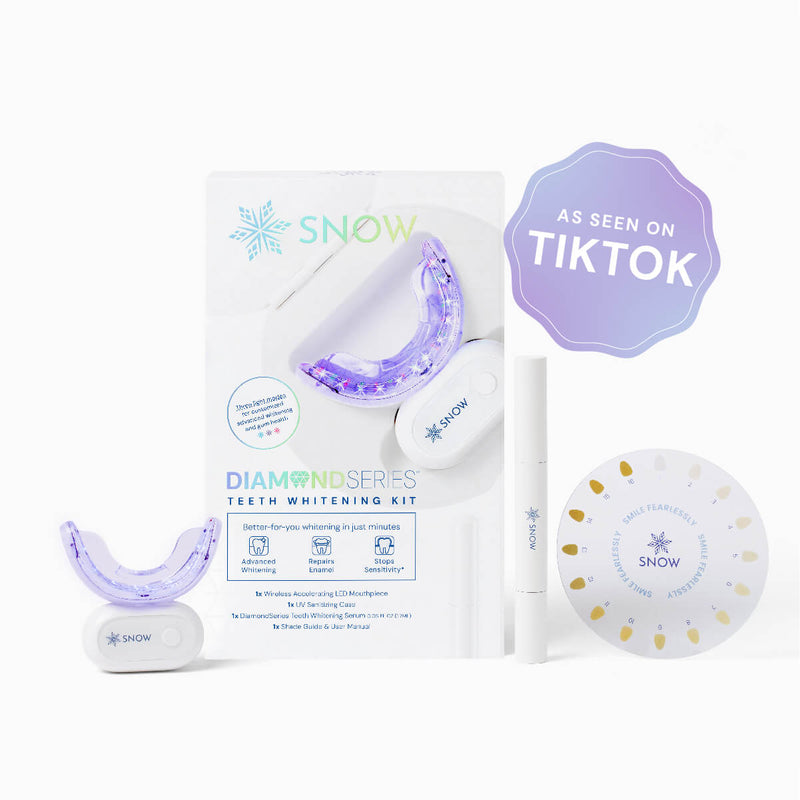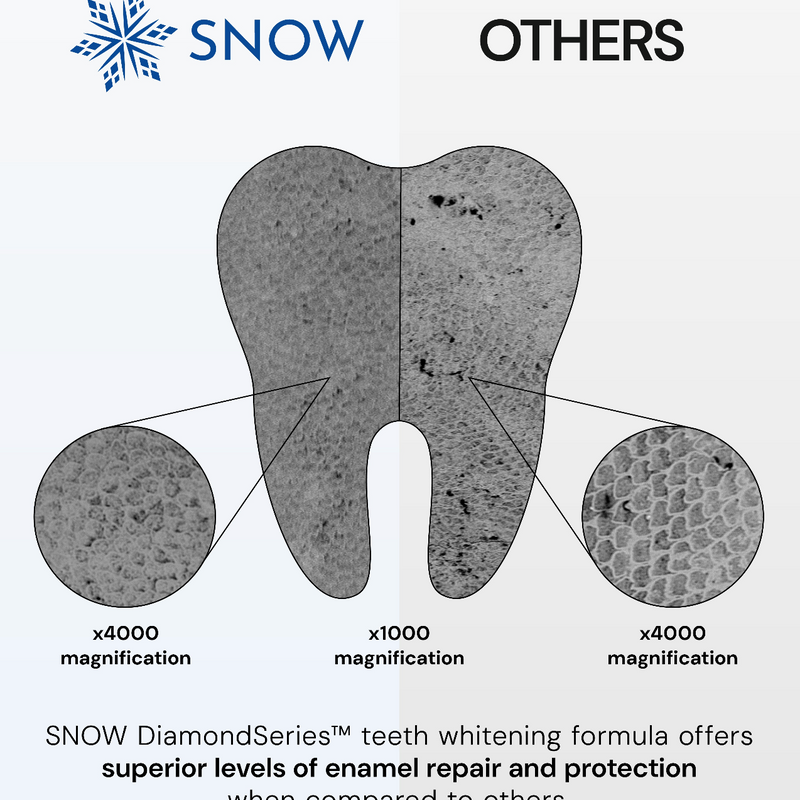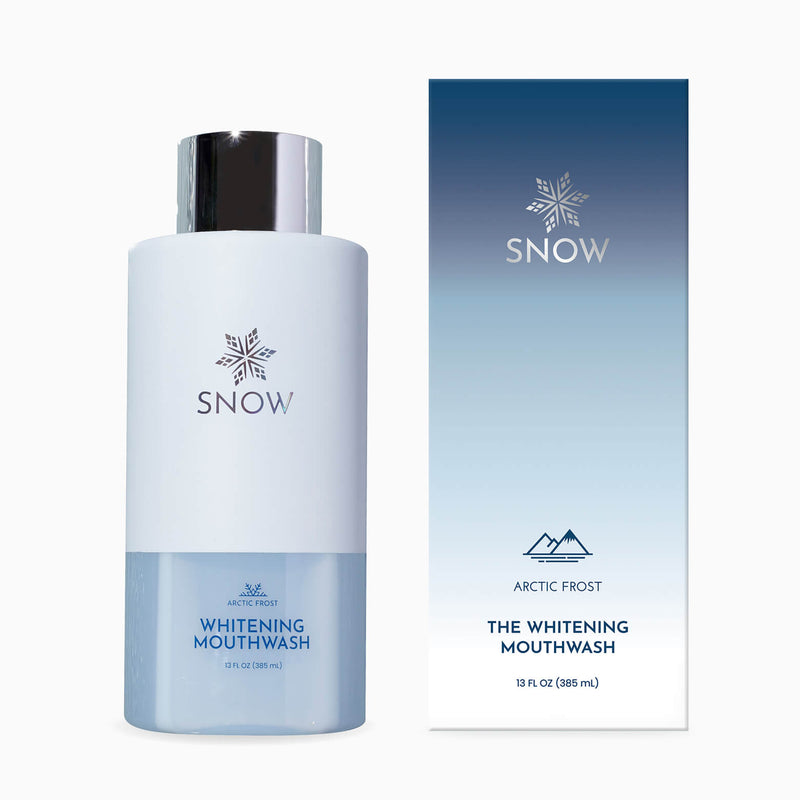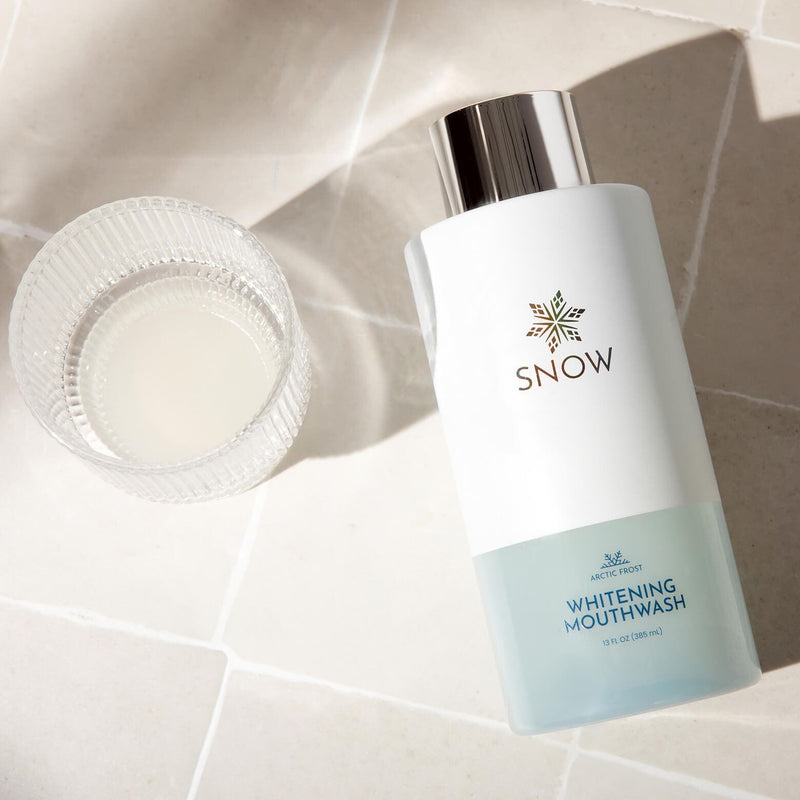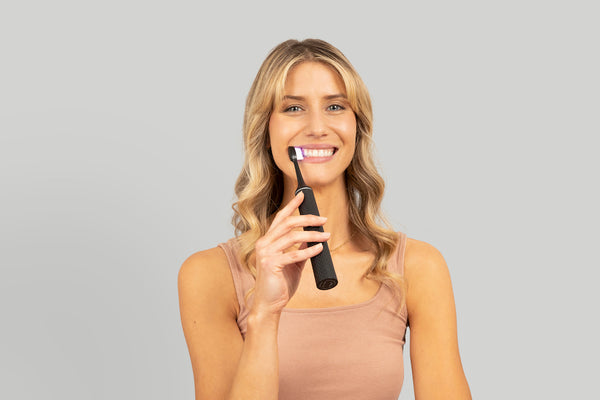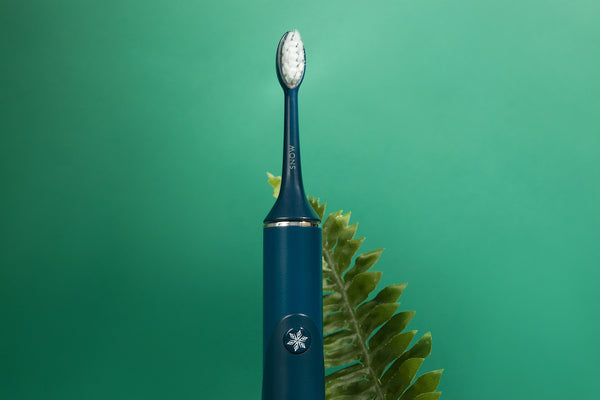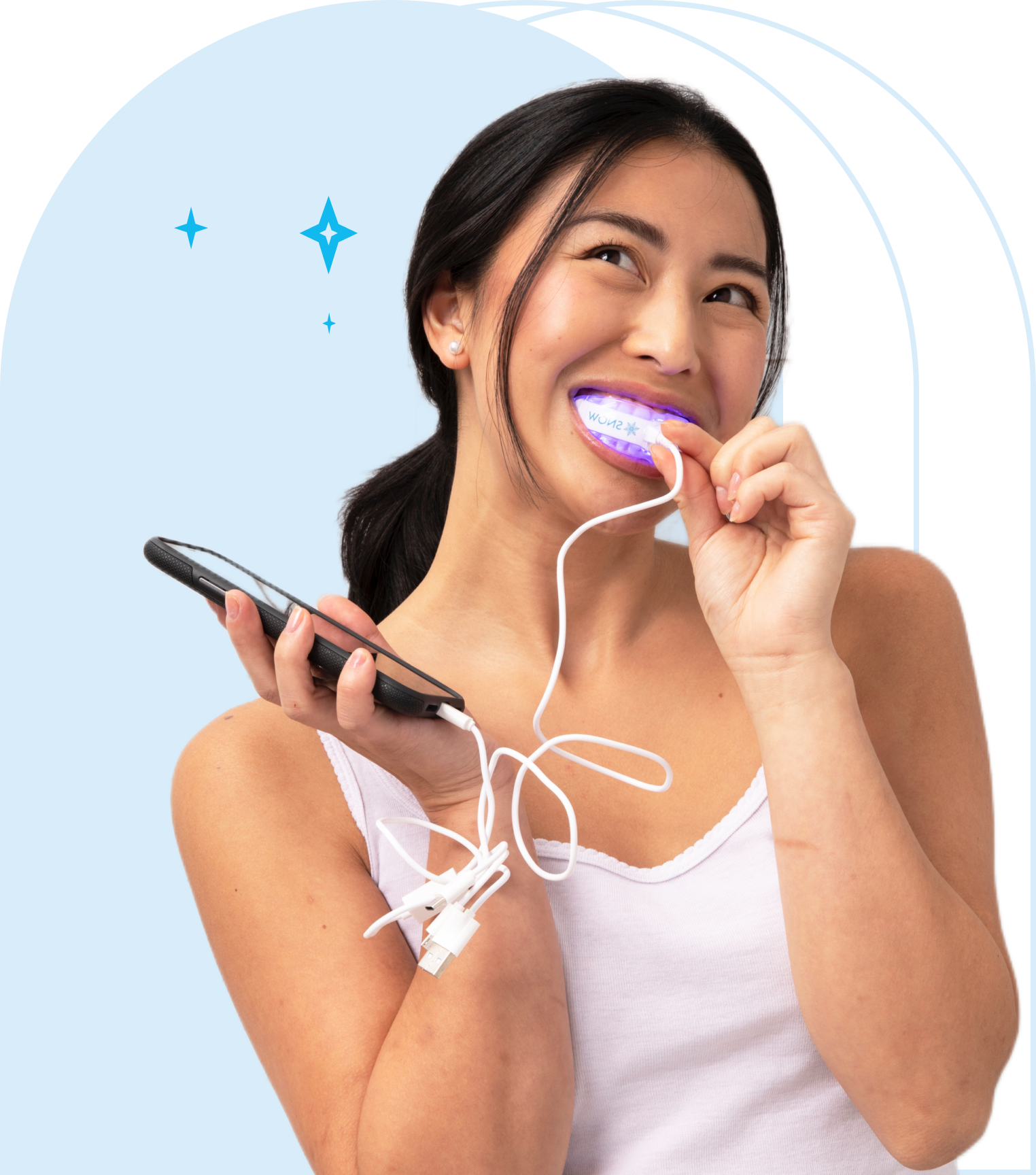Wondering how to clean your electric toothbrush effectively? SNOW has you covered. To answer your query directly, cleaning your electric toothbrush is crucial for maintaining oral hygiene.
In this comprehensive guide, we'll delve into various methods and tips for keeping your electric toothbrush clean and germ-free. It's important to have a clean toothbrush to ensure it remains effective and hygienic for daily use.
We'll explore the importance of regular cleaning to prevent bacterial buildup and potential oral health issues. You'll discover practical steps, including rinsing with hot water, using a UV toothbrush sanitizer, and soaking the brush head in antibacterial mouthwash.
Additionally, we'll address common questions about replacing toothbrush heads, keeping the handle and base clean, and storing your electric toothbrush properly.
With SNOW's expert tips, you'll learn how to maintain a clean electric toothbrush for a healthier, brighter smile.
What this article covers:- The Importance of Cleaning Your Electric Toothbrush Regularly
- How to Clean Your Electric Toothbrush
- When Should You Replace Your Toothbrush Head?
- How Do You Keep Your Toothbrush Clean?
- How Do You Keep Your Electric Toothbrush Base and Handle Clean From Gunk?
- Storage Tips for a Cleaner Toothbrush
- Cleaning Electric Toothbrushes FAQs
The Importance of Cleaning Your Electric Toothbrush Regularly
Maintaining a clean electric toothbrush is paramount for optimal oral hygiene, and SNOW is here to emphasize its significance.
Neglecting regular cleaning can result in the accumulation of harmful bacteria and germs on the bristles and handle, potentially leading to oral health issues.

Additionally, you should change your toothbrush after you are sick to prevent re-introducing bacteria and viruses to your system.
According to a study published on PubMed Central, failure to clean your toothbrush adequately can contribute to bacterial contamination.
For those wondering how electric toothbrushes work, they utilize rapid bristle movements to effectively clean teeth, requiring regular maintenance to stay in top condition.
Now, let's delve deeper into why regular cleaning is essential in preventing the buildup of bacteria and germs on your electric toothbrush.
Toothbrushes And Bacteria
Bacteria thrive in moist environments, making your toothbrush an ideal breeding ground if it isn't cleaned regularly.
These microorganisms can originate from various sources, including the mouth, surrounding environment, and even the toothbrush holder.
Without proper cleaning, bacteria can proliferate on the bristles and handle, posing a risk to your oral health.
How to Clean Your Electric Toothbrush
In this section, SNOW will provide effective methods for keeping your electric toothbrush clean, ensuring optimal oral hygiene.
We understand the importance of maintaining cleanliness to enhance the effectiveness of our teeth whitening products, such as our LED Teeth Whitening Electric Toothbrush and Advanced Whitening Electric Toothbrush.
Hot Water Before And After Each Use
WikiHow suggests that rinsing your electric toothbrush head with hot water before and after each use is crucial.
This simple practice helps eliminate toothpaste residue and debris, preventing bacterial growth and ensuring a hygienic brushing experience.
Use A UV Toothbrush Sanitizer
Investing in a UV toothbrush sanitizer adds an extra layer of protection against bacteria and germs. These sanitizers effectively kill harmful microorganisms on your toothbrush, promoting better oral health outcomes.
Cleaning Your Electric Toothbrush Head
Regularly cleaning your electric toothbrush head is essential. Soak it in antibacterial mouthwash for a few minutes to disinfect the bristles thoroughly.
This practice ensures a hygienic brushing experience and prolongs the lifespan of your toothbrush.
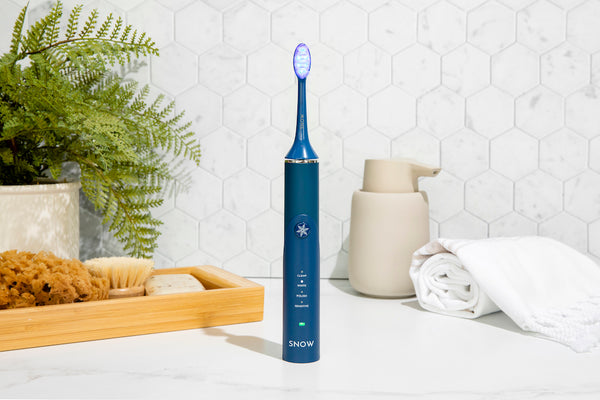
When Should You Replace Your Toothbrush Head?
We recommend replacing your toothbrush head every three months or earlier if you notice any signs of bristle wear.
At SNOW, we understand the importance of maintaining excellent oral hygiene for achieving a radiant smile.
This proactive approach guarantees thorough cleaning and helps prevent the accumulation of harmful bacteria.
To enhance your oral care routine, consider using our refillable heads for LED electric toothbrushes. These innovative heads ensure a gentle yet effective cleaning experience, promoting whiter teeth and healthier gums.
By adhering to a regular replacement schedule, you ensure that your toothbrush continues to deliver optimal results, leaving your mouth feeling fresh and clean.
Don't underestimate the impact of a fresh toothbrush head on your overall oral health—it's a small step that can make a big difference in achieving a dazzling smile.
How Do You Keep Your Toothbrush Clean?
Ensuring the cleanliness of your toothbrush is vital for maintaining excellent oral hygiene and maximizing the effectiveness of your at-home teeth whitening routine.
At SNOW, we prioritize hygiene and offer simple yet effective tips to keep your toothbrush clean and bacteria-free.
1. Change Your Toothbrush Head Every 3 Months
Regularly swapping out your toothbrush head every three months is crucial to prevent bacterial buildup and ensure efficient cleaning.
2. Don't Share Your Toothbrush
Sharing toothbrushes can transfer bacteria and increase the risk of oral infections. Always use your own toothbrush to maintain oral health.
3. Use A Travel Case
When on the go, utilize a travel case to shield your electric toothbrush from contamination. Remember to clean the travel case regularly to uphold hygiene standards.
4. Consider A Toothpaste Dispenser
Invest in a toothpaste dispenser to minimize contact with toothpaste tubes, reducing the risk of bacterial contamination and ensuring a hygienic brushing experience.
5. Clean After Each Use
After each brushing session, thoroughly clean your electric toothbrush to remove any remaining toothpaste or debris. This simple step prevents bacterial growth and promotes optimal oral hygiene.
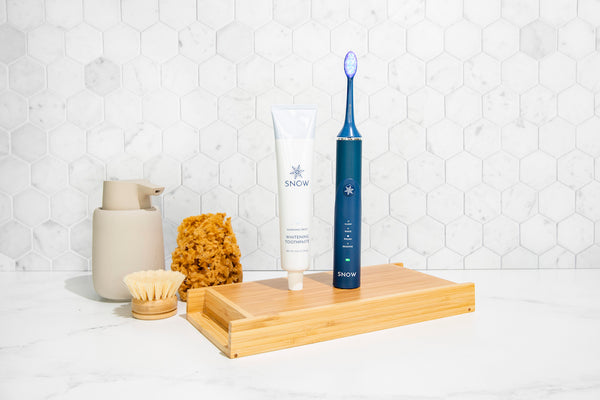
How Do You Keep Your Electric Toothbrush Base And Handle Clean From Gunk?
Maintaining the cleanliness of your electric toothbrush base and handle is crucial for ensuring optimal oral hygiene and extending the life of your device.
At SNOW, we recommend the following steps to effectively remove gunk and prevent bacterial buildup:
1. Regular Wiping
Regularly wipe down your electric toothbrush base and handle with a clean cloth dampened with warm, soapy water.
Ensure to thoroughly clean all surfaces, including hard-to-reach areas, to remove any accumulated gunk and residue.
2. Disinfectant Wipes
Periodically, use disinfectant wipes to sanitize your electric toothbrush base and handle. Gently wipe the surfaces to eliminate any lingering bacteria and maintain hygiene standards.
Be sure to follow the manufacturer's instructions for safe use of disinfectant products.
3. Air Drying
After cleaning, allow your electric toothbrush base and handle to air dry completely before placing them back on the charger or storage.
Proper air drying helps prevent moisture buildup, which can contribute to bacterial growth and gunk accumulation.
Implementing these simple yet effective cleaning practices will help keep your electric toothbrush base and handle free from gunk, ensuring a hygienic brushing experience every time.
Storage Tips for a Cleaner Toothbrush
Proper storage of your electric toothbrush is essential for maintaining hygiene and prolonging its lifespan.
Here are SNOW's recommended storage tips:
Upright Position
Store your electric toothbrush in an upright position to facilitate proper airflow around the bristles and base.
This helps prevent moisture buildup, reducing the risk of bacterial growth and prolonging the freshness of your toothbrush.
Open Containers
Avoid storing your electric toothbrush in closed containers or holders with limited ventilation. Closed containers trap moisture, creating a conducive environment for bacteria to thrive.
Opt for open containers or holders with ample ventilation to promote air circulation and keep your toothbrush dry and clean.
Implementing these storage tips will help ensure that your electric toothbrush remains clean, dry, and free from bacterial contamination, promoting optimal oral hygiene.
Cleaning Electric Toothbrushes FAQs
Do dentists really recommend electric toothbrushes?
Yes, electric toothbrushes are commonly recommended by dentists due to their effectiveness in plaque removal and gum disease prevention.
Electric toothbrushes can reduce plaque and gingivitis as effectively as manual brushing.
Additionally, electric toothbrushes can provide more consistent brushing technique, especially for individuals with limited dexterity, leading to improved oral hygiene.
How long do electric toothbrush heads last?
Electric toothbrush heads generally have a lifespan of three to four months, but this can vary based on individual usage habits and the condition of the bristles. It's essential to replace toothbrush heads regularly to ensure optimal cleaning effectiveness.
Over time, the bristles can become worn and frayed, diminishing their ability to remove plaque effectively. Additionally, using a worn-out toothbrush head can potentially damage tooth enamel and gums.
Regularly replacing electric toothbrush heads is crucial for maintaining good oral hygiene and maximizing the benefits of at-home teeth whitening treatments.
Are electric toothbrushes better than manual toothbrushes?
From our perspective at SNOW, electric toothbrushes indeed hold several advantages over manual toothbrushes for at-home teeth whitening.
Here's why:
- Better plaque removal: Electric toothbrushes are more effective in removing plaque compared to manual ones. Studies have shown that they can remove up to 21% more plaque.
- Improved gum health: Electric toothbrushes are gentler on the gums while providing superior cleaning. This can lead to reduced gum recession and improved overall gum health.
While manual toothbrushes can be effective when used correctly, electric toothbrushes offer added convenience and efficiency, making them a preferred choice for many individuals.
How do you clean your teeth with an electric toothbrush?
When utilizing an electric toothbrush for at-home teeth whitening, SNOW recommends the following steps:
- Hold at a 45-degree angle: Position the electric toothbrush at a 45-degree angle towards the gum line for optimal cleaning [5].
- Gentle movement: Move the brush gently along the gum line and tooth surfaces, allowing the bristles to effectively remove plaque and debris [5].
- Avoid excessive pressure: Let the electric toothbrush do the work for you; avoid pressing too hard, as excessive pressure can damage the gums and enamel [2].
By following these steps, you can ensure thorough cleaning while protecting your dental health.
Can you use an electric toothbrush with braces?
Yes, it's entirely safe to use an electric toothbrush when you have braces. However, it's crucial to pay extra attention to cleaning around the brackets, wires, and other orthodontic appliances to prevent plaque buildup and maintain oral hygiene.
‘Conclusion
In wrapping up our discussion, we've delved into the nuances of maintaining optimal oral hygiene with electric toothbrushes, particularly when dealing with braces.
We've learned that electric toothbrushes offer effective plaque removal and gum health improvement, making them a valuable tool in at-home dental care.
With proper technique and attention to detail, these toothbrushes can contribute significantly to overall dental health, even amidst orthodontic treatment.
For those seeking comprehensive dental care, including teeth whitening, consider exploring SNOW's innovative products.
Our range of toothbrushes not only ensures thorough cleaning but also complements your journey to a brighter smile.
If you want to learn more, why not check out these posts:
- Can You Get Sick From Your Toothbrush
- How to Clean Electric Toothbrush with Vinegar
- Bamboo Toothbrush Benefits
- Tongue Scraper vs. Toothbrush
- Soft vs. Extra Soft Toothbrush
- Electric Toothbrush Round Head vs Oblong
- Bamboo Toothbrush Mold
- How to Use Electric Toothbrush
- Benefits of Electric Toothbrush
- How Often to Replace Electric Toothbrush
- Can Electric Toothbrushes Damage Teeth?
- Are Electric Toothbrushes Worth It?
- Mold in Electric Toothbrush
- Toothbrushes for Braces
- Can Your Toothbrush Reinfect You with COVID?











